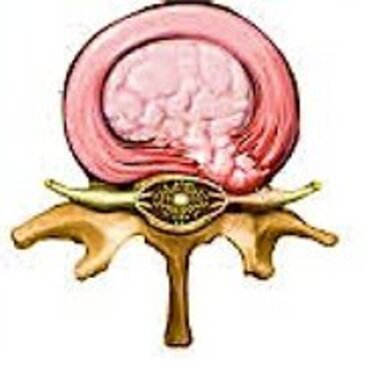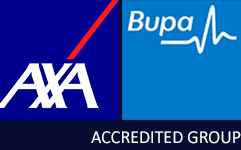Sciatica
Sciatica is a term used to describe the condition where patients experience altered sensation and leg pain as a result of sciatic nerve irritation. Pressure on the sciatic nerve in the spine can cause tingling, pins and needles, burning, and weakness in the leg.
Symptoms of Sciatica
- Leg pain
- Burning sensation in the leg
- Consistent pain on one side of the leg/buttocks
- Pain made worse with daily activities such as
- sitting, driving, lifting, coughing or sneezing
Causes of Sciatica
Anything that compresses or pinches the sciatic nerve can cause sciatica. However, the most commonly seen cause is a slipped disc.
Diagnosis of Sciatica
A full medical history and physical examination combined with an MRI scan will be able to assess if there is a spinal cause for the symptoms of sciatica.
Treatment of Sciatica
Heat and ice packs can help with acute painful flares of sciatica. In addition to this physiotherapy exercises can help.
Disc Herniation or Prolapsed Disc
A slipped or prolapsed disc describes what happens when one of the gel filled intervertebral discs slips out of its usual position.
This often affects the intervertebral
discs in the lumbar spine (lower back)
due to previous injury or after activity
such as heavy lifting. Discs can also be
damaged through wear and tear and
sporting activities with incorrect
biomechanics, or poor posture.
A disc prolapse can cause injury or
irritation to the nerve root it compresses.

Diagnosis and Treatment of Disc Prolapse
After a history and physical examination, an MRI scan will show the degree of disc prolapseor disc herniation and the level of nerve compression.
Most patients improve with non-surgical treatments. This includes simple pain relief medications, anti-inflammatory medications and physiotherapy exercises to increase strength and improve flexibility.
Around 1 in 4 patients do not improve with non-surgical treatments and they may benefit from a steroid injection (cortisone), which is performed in the operating theatre as a day case procedure.
In more severe cases an operation such as microdiscectomy and/or fusion may be advised.
Microdiscectomy is minimally invasive spine surgery where the prolapsed disc is visualised under a microscope and the part that is pressing on the nerve is removed to relieve the pressure.
Laminectomy is an operation used when the bone that curves around the spinal cord is causing pressure on the nerve.
After Surgery
Most patients stay overnight and microdiscectomy is a highly successful operation. Complete relief of sciatica within a few hours or days of surgery is common. However, in some cases pain takes longer to settle due to nerve swelling caused by worse disc prolapses that may have been present for longer periods of time.
Usually driving is permitted at 10-14 days post-op and return to work can be as soon as 2-3 weeks for those that are desk-based. It is advisable to take longer before returning to more strenuous manual work.
Surrey Orthopaedic Clinic Sciatica Specialists:




